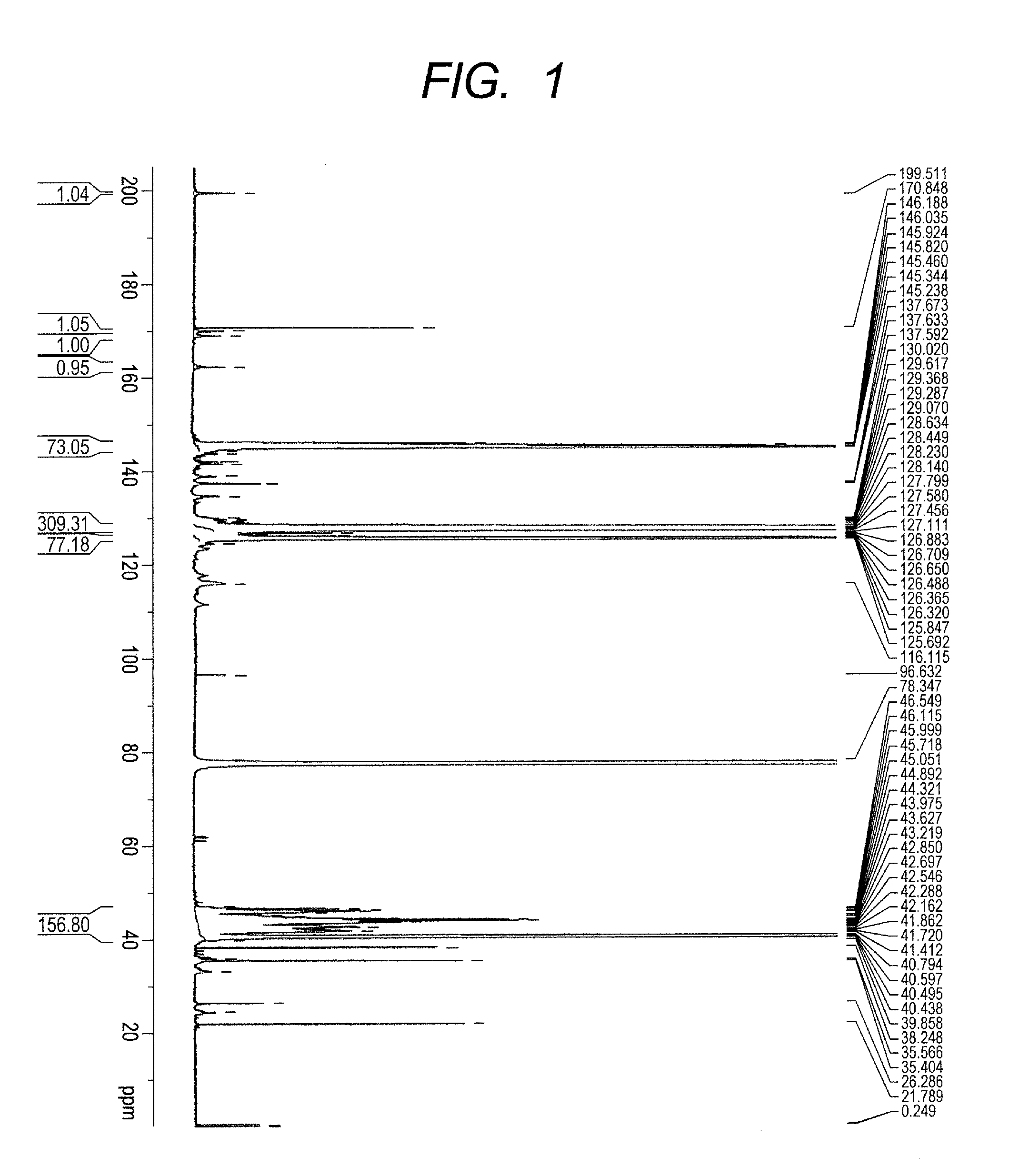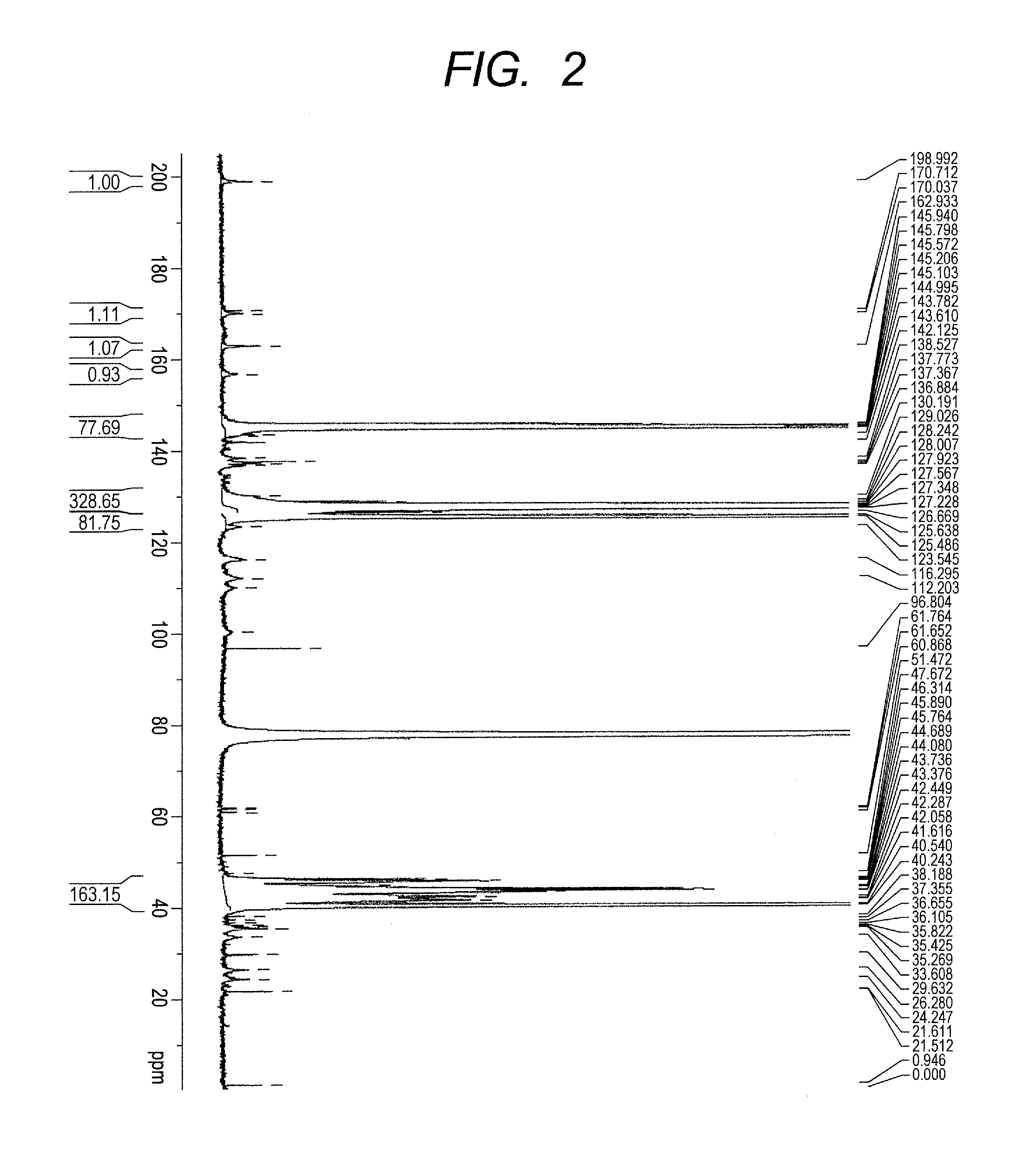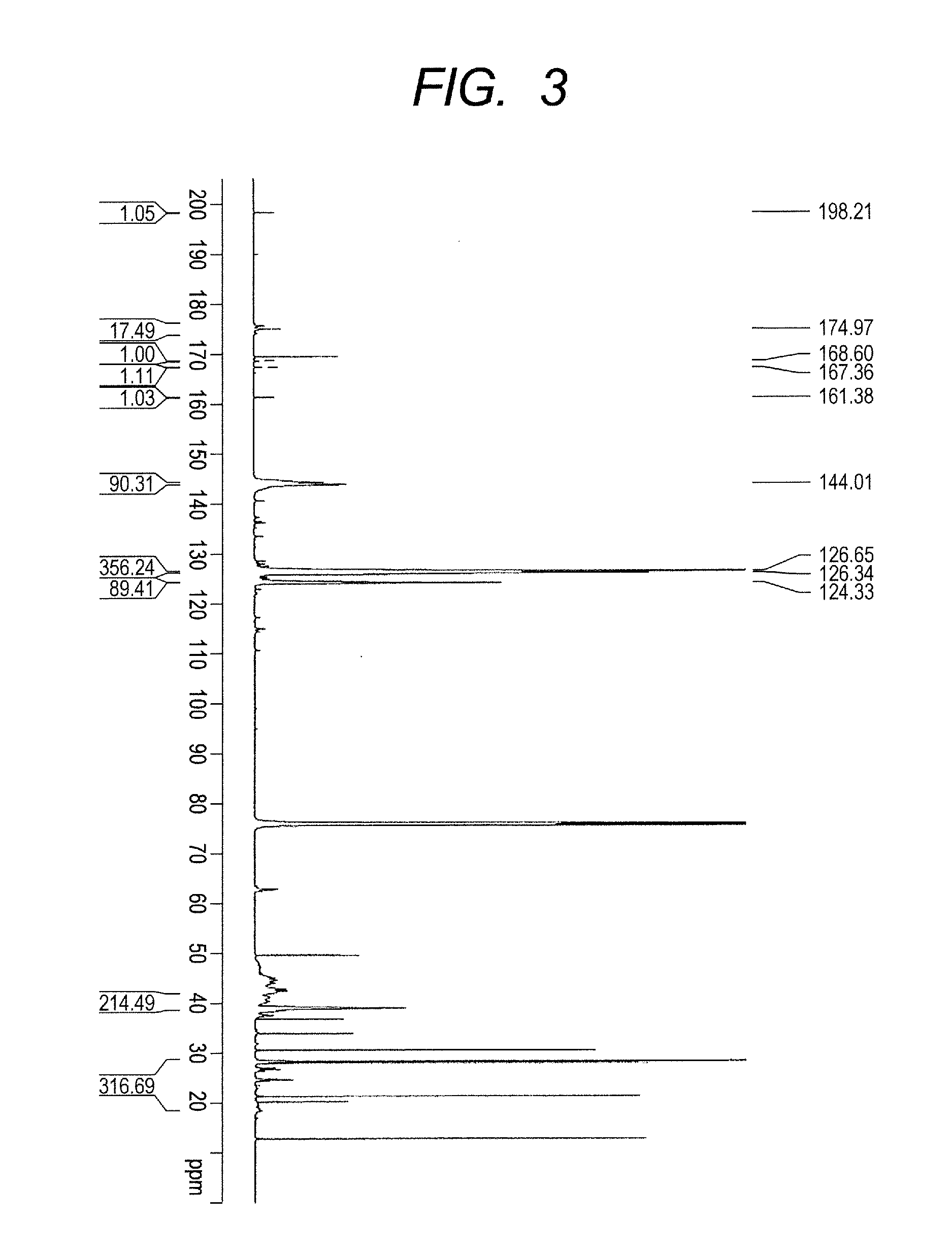Method for producing compound having colorant structure at main chain terminal of polymer, and pigment dispersant, pigment composition, pigment dispersion and toner containing compound obtained by the production method
a technology of colorant structure and polymer, applied in the field of producing a compound having a colorant structure, can solve the problems that the addition of dispersant may affect various characteristics, and achieve the effects of enhancing the dispersibility of pigments, good tinting power, and high ra
- Summary
- Abstract
- Description
- Claims
- Application Information
AI Technical Summary
Benefits of technology
Problems solved by technology
Method used
Image
Examples
example 1
[0250]A compound having a colorant structure portion was obtained by the following method.
[0251]
[0252]Colorant compound (101) represented by the following structure was produced according to the following scheme.
[0253]First, 50.0 parts of isopropyl alcohol, 50.0 parts of anisole and 9.07 parts of iodine were heated under purging with nitrogen so that the liquid temperature reached 80° C. A suspension mixture of 500 parts of styrene and 30.0 parts of 4,4′-azobis(4-cyanopentanoic acid) (azo nitrile type polymerization initiator, produced by Wako Pure Chemical Industries, Ltd., product name: V-501) was dropped thereto over 2 hours. Thereafter, the solution was heated and stirred for 10 hours. After completion of the reaction, 200 parts of tetrahydrofuran was added to the heated mixture to re-precipitate the mixture in methanol. A solid precipitated was separated by filtration to provide compound (P-3).
[0254]Next, 25.0 parts of compound (54), 15.4 parts of compound (55) and 15.0 parts o...
example 2
[0260]A compound having a colorant structure portion was obtained by the following method.
[0261]
[0262]Colorant compound (111) represented by the following structure was produced according to the following scheme.
[0263]N,N-dimethylformamide (142 parts) and 30.8 parts of concentrated hydrochloric acid were added to 15.0 parts of compound (60), and cooled in ice to 5° C. or lower. A solution of 7.25 parts of sodium nitrite in 50.0 parts of water was added to the resulting solution, and stirred at the same temperature for 1 hour (diazonium salt solution). Compound (56) (21.9 parts) and 68.4 parts of calcium carbonate were added to 142 parts of N,N-dimethylformamide and cooled in ice to 5° C. or lower, and the diazonium salt solution was added thereto for reaction at 5° C. or lower for 3 hours. After completion of the reaction, the reaction liquid was filtrated, and the solvent was distilled off under reduced pressure. A precipitate obtained was washed with dilute hydrochloric acid, wate...
example 3
[0269]A compound having a colorant structure portion was obtained by the following method.
[0270]
[0271]Colorant compound (123) represented by the following structure was produced according to the following scheme.
[0272]First, 50.0 parts of isopropyl alcohol, 50.0 parts of anisole and 5.61 parts of iodine were heated under purging with nitrogen so that the liquid temperature reached 80° C. A suspension mixture of 350 parts of styrene, 219 parts of stearyl acrylate and 18.6 parts of 4,4′-azobis(4-cyanopentanoic acid) (azo nitrile type polymerization initiator, produced by Wako Pure Chemical Industries, Ltd., product name: V-501) was dropped thereto over 2 hours. Thereafter, the solution was heated and stirred for 10 hours. After completion of the reaction, 250 parts of tetrahydrofuran was added to the heated mixture to re-precipitate the mixture in methanol. A solid precipitated was separated by filtration to provide compound (P-11).
[0273]Next, 0.548 parts of compound (62) was added to...
PUM
| Property | Measurement | Unit |
|---|---|---|
| half-life temperature | aaaaa | aaaaa |
| half-life temperature | aaaaa | aaaaa |
| molar ratio | aaaaa | aaaaa |
Abstract
Description
Claims
Application Information
 Login to View More
Login to View More - R&D
- Intellectual Property
- Life Sciences
- Materials
- Tech Scout
- Unparalleled Data Quality
- Higher Quality Content
- 60% Fewer Hallucinations
Browse by: Latest US Patents, China's latest patents, Technical Efficacy Thesaurus, Application Domain, Technology Topic, Popular Technical Reports.
© 2025 PatSnap. All rights reserved.Legal|Privacy policy|Modern Slavery Act Transparency Statement|Sitemap|About US| Contact US: help@patsnap.com



